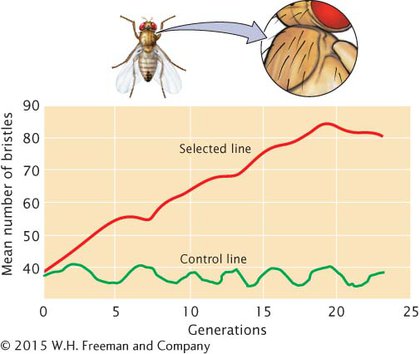Limits to Selection Response
When a characteristic has been selected for many generations, the response may eventually level off, and the characteristic no longer responds to selection (Figure 17.15). A potential reason for this leveling off is that the genetic variation in the population may be exhausted; at some point, all individuals in the population may have become homozygous for the alleles that encode the selected trait. When there is no more additive genetic variance, heritability equals zero, and there can be no further response to selection.

Sometimes the response to selection levels off even while some genetic variation remains in the population. This leveling off takes place because natural selection opposes further change in the characteristic. The response to selection for small body size in mice, for example, eventually levels off because the smallest animals are sterile and cannot pass on their genes for small body size. In this case, artificial selection for small size is opposed by natural selection for fertility, and the population can no longer respond to the artificial selection.